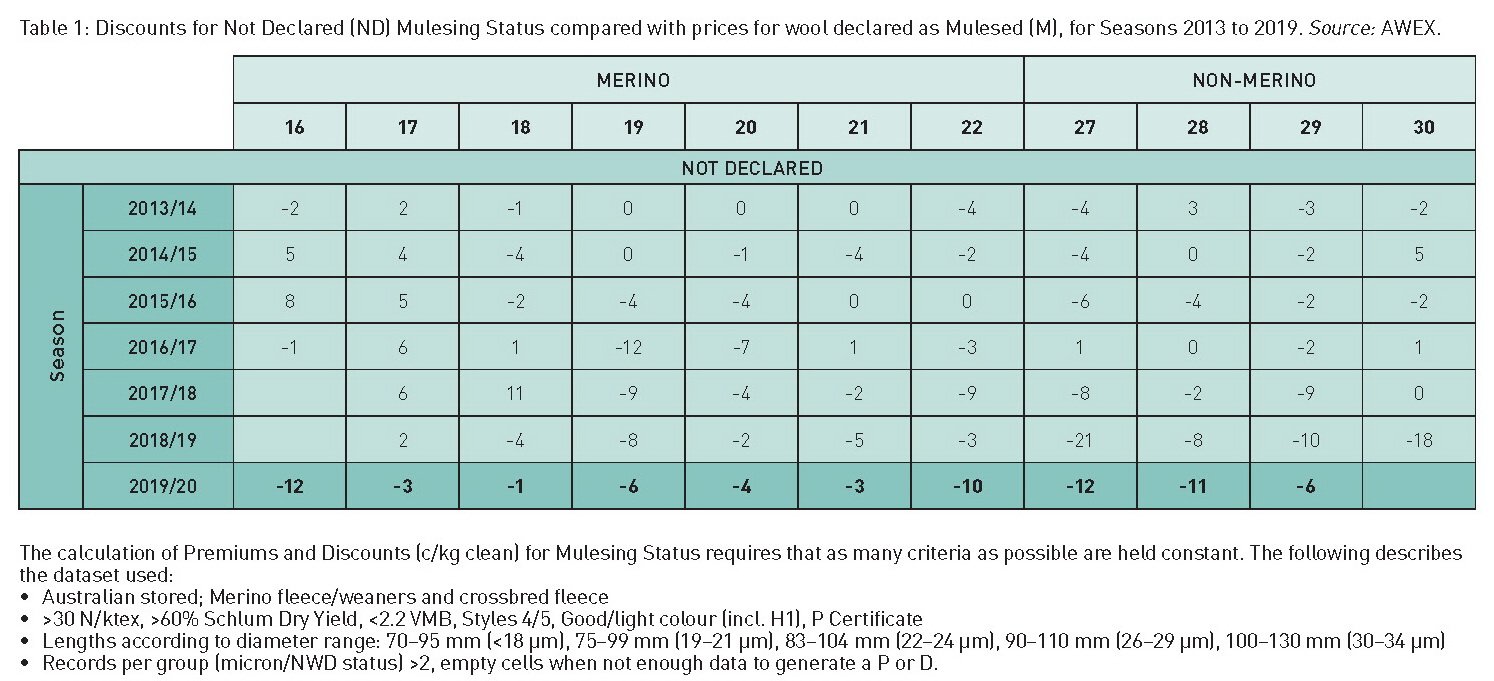All woolgrowers are being urged to complete the National Wool Declaration (NWD), regardless of their mulesing status. The NWD provides transparency to buyers and helps woolgrowers earn Premiums and/or avoid Discounts for their wool.
Key messages
- To attract the most competition for their wool, all woolgrowers, regardless of their mulesing status and wool type, should ensure that their wool is accompanied by an NWD.
- Failure to complete a NWD has usually resulted in the wool being
- Using the NWD helps promote not only your clip, but also the Australian wool industry.
The National Wool Declaration (NWD) enables woolgrowers to communicate directly with prospective buyers, processors and retailers. Whenever AWI discusses the Australian wool industry's animal welfare with brands and retailers along the supply chain, they invariably say that they would very much like Australian woolgrowers to declare their wool through the NWD; it creates transparency and choice in the marketplace.
The message is clear. To ensure your wool attracts the most competition available, you need to ensure that your wool is accompanied by an NWD.
All woolgrowers are encouraged to complete the NWD, regardless of their sheep's breed and wool type, and regardless of their mulesing status. Completing the NWD is about giving our global customers assurance of the quality and integrity of Australian wool.
President of the National Council of Wool Selling Brokers of Australia (NCWSBA) and Managing Director of Jemalong Wool, Rowan Woods, says all sheep producers should ensure that their wool is accompanied by an NWD.
"Undeclared clips do not attract full competition," he said.
The percentage of bales accompanied by a declaration of their Mulesing Status rose to 74% for the 2019/20 season, up from 50% five years previous. While this increase is to be applauded, it means there are still about a quarter of bales being sold as Not Declared (ND).
From a financial perspective, it is clear that woolgrowers usually receive Premiums for wool declared as Non Mulesed (NM) and Ceased Mulesed (CM), and (to a lesser extent) wool declared as mulesed with Analgesic/Anaesthetic (AA).
However, did you know that wool sold as Not Declared (ND) has usually received a Discount compared to wool that is declared as Mulesed (M)? See Table 1 below. Based on this data, even if you do mules, it would likely be financially advantageous for you to complete the NWD and declare your wool as Mulesed (M), or preferably Mulesed with AA, rather than not complete the NWD.
The rate of completion the NWD varies across the country. The percentage of bales for which Mulesing Status is declared (for Merino wool ≤24.5 µm) continues to rise: NSW 85% in 2019/20 (up from 60% in 2014/15), Victoria 88% (up from 66%), South Australia 84% (up from 58%), Tasmania 89% (up from 53%), Queensland 83%, (up from 40%), WA 44% (up from 21%).
Once a woolgrower has completed the NWD, the contents are converted by the wool handling agent into a recognised Mulesing Status for inclusion in sale catalogues and test certificates.
AWEX developed the NWD for Mulesing Status in 2008 in consultation with the Australian wool industry, to assist buyers and their clients gain access to information on issues that can influence purchasing decisions. The NWD also includes, as well as Mulesing Status, an option to declare the mob's Dark and Medullated Fibre Risk (DMFR), ie contact with shedding breeds of sheep, which sheep producers are also encouraged to complete.

This article appeared in the June 2021 edition of AWI's Beyond the Bale magazine. Reproduction of the article is encouraged, however prior permission must be obtained from the Editor.






